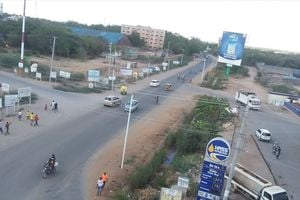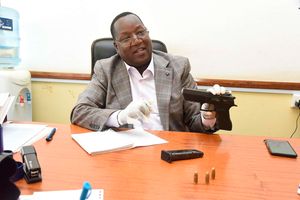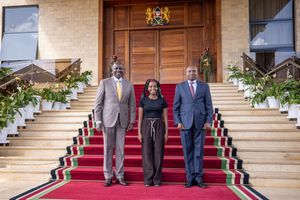
A survey has identified at least 309 criminal gangs in Kenya.
Other than its iconic coastal features so loved by tourists and locals alike, Mombasa is gaining a darker reputation — one of having the highest concentration of criminals in the country.
According to a 2025 survey by the National Crime Research Centre (NCRC) which examined the proliferation and resilience of gangs in 11 counties, Mombasa topped the list, accounting for at least 73 active criminal gangs of the total 309 mapped in the devolved units.
Mombasa is followed by Nairobi with 56, and Kilifi finishing the top three slot with 47. These three counties alone accounted for over half of the total gangs identified in the study, highlighting the severity of the issue in coastal and urban regions.
In Western Kenya, Bungoma reported 27 gangs, Busia 24, and Kisumu 20, signalling a significant and growing presence despite a general perception of declining gang activity nationwide.
Other counties that showed considerable gang activity were Kwale, which recorded 15 gangs, Kiambu 14, Machakos 12, Garissa 11, and Nakuru 10.
These gangs, the report noted, are not just rising in numbers but growing in complexity, organisation, and brazenness, making them one of the country’s gravest security threats. Not only are they spreading but also adapting and embedding themselves in communities, defying numerous state interventions.
Part of everyday life
What makes these gangs particularly dangerous is how deeply they have entrenched themselves in everyday life.
They exploit vulnerable youth, enforce territorial control, operate extortion rackets, and wield influence in sectors ranging from the informal economy to local politics.
In Mombasa, gangs like Wakali Wao, Panga Boys, and Chafu za Docks, have become household names, feared for their brutality and admired by some for their perceived power.
“These gangs are no longer fringe groups; they have grown into sophisticated, networked organisations capable of adapting to law enforcement pressure and evolving in response to socio-political dynamics,” the report stated.
Majority of respondents, 82.3 per cent, mostly drawn from law enforcement and administrative officers, believe criminal gangs have proliferated in their areas.
With a visibility rate of 87.6 per cent, the survey established that the gangs no longer hide their activities. It also established that counties like Bungoma, Busia, and Kisumu have recorded increases.
Rebranding of gangs
Rebranding and mutating is a key strategy used by the gangs to elude the authorities. For instance, the feared Mungiki sect, has now resurfaced but under different cloaks -adopting names such as Quails and Siafu, with its members donning clean-shaven appearances and even suits to avoid suspicion.
Others have splintered into smaller, more elusive cells making the tracking and disrupting of gang activity extremely difficult.
The NCRC report attributes gang proliferation to a cocktail of several factors straddling socio-economic and structural failures.
However, unemployment, especially among youth, is a major driver. Lack of education is also a factor with most gang members being young men, often school dropouts with histories of substance abuse.
The promise of income, however illicit, and a sense of belonging lures them into gang life. Peer pressure, poor family structures, and community tolerance have also further reinforced gang culture. Though spirited are the efforts by the government to rid the country of these gangs, a huge percentage of the respondents (84.6 per cent) acknowledged that some community members actively or passively support gangs.
This they do through silence, harbouring criminals, or treating gang activity as normal, and in these ways, communities are unintentionally contributing to the resilience of these groups.
Political interference also remains a key enabler of criminal gangs with the report pointing to cases where politicians use gangs for personal gain, mobilising them for electoral violence, funding them for intimidation, or shielding them from justice.
Corruption, limited resources, and weak coordination among police, judiciary, and other criminal justice actors have all contributed to the persistence of gang networks.










